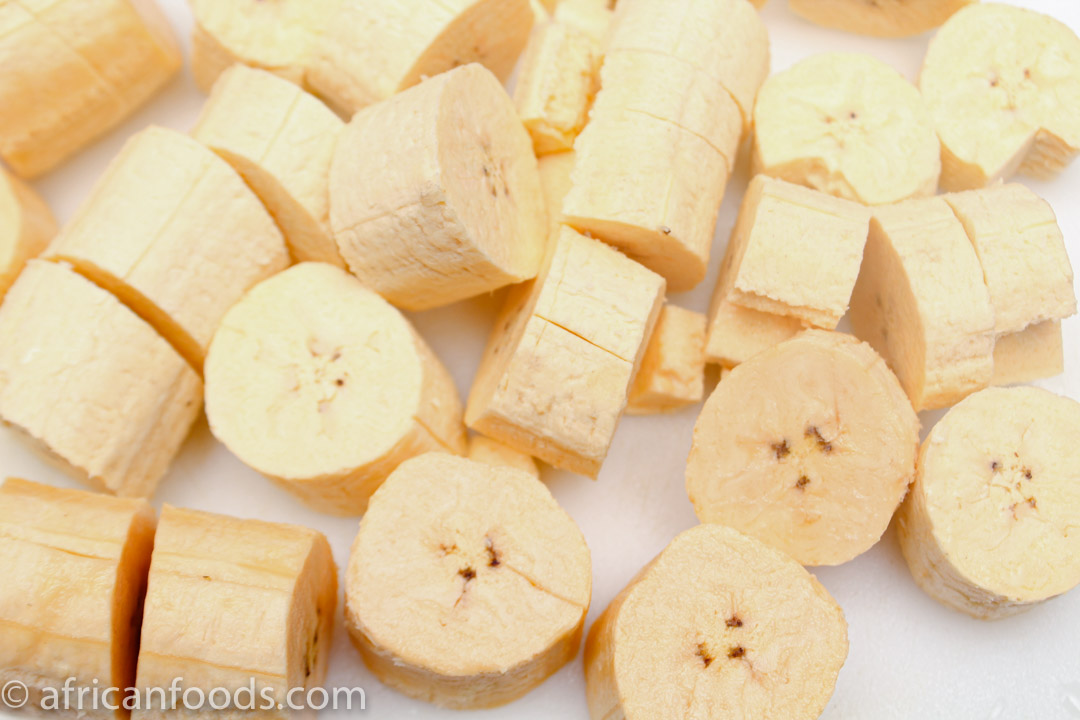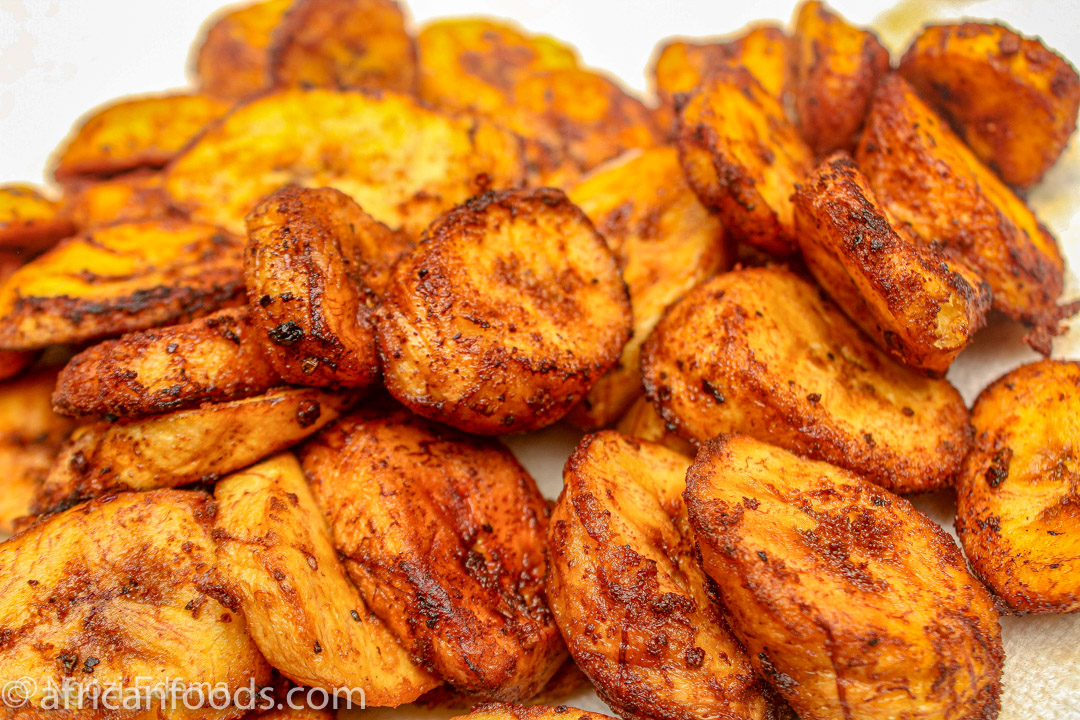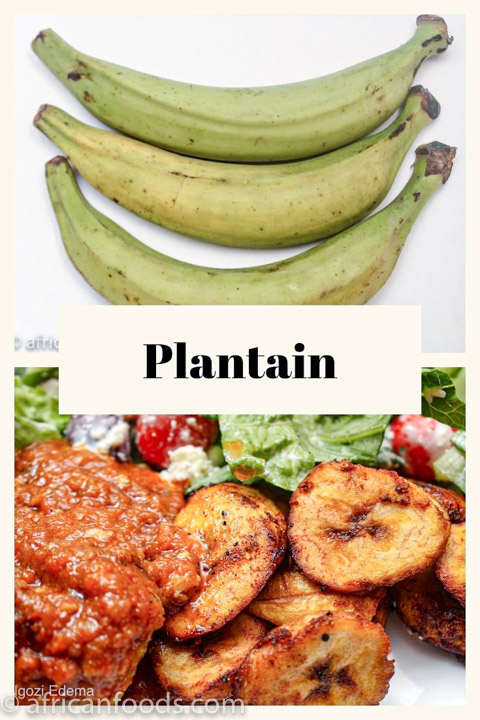Plantain
Plantain is a staple in most of the Tropics. Very similar to its close botanic relative, the banana. The significant difference is, you cook plantain before eating them. Cooking is very similar to cooking potatoes. You could boil, grille, fry, roast, or stuff them.
Plantain is a green to yellow boat-shaped fruit (shade of color depends on the stage of ripening) of a large shrub called Musa paradisiacal.
It can be eaten ripe or unripe. The skin is usually yellow when ripe and easy to take off. It is sweeter but less nutritious as its unripe green counterpart. The ones with the green skin are unripe, and the skin is hard to take off. They contain loads of starch and have a more neutral taste. Most people would prefer the ripened ones for their sweetness.
When it ripens, the starch is converted to sucrose and becomes sweeter as the skin assumes a yellowish black color.
The most popular method of cooking plantain is by frying. In Nigeria, some call it dodo. The Ghanaians have a more seasoned and spicer version called kelewele.
When fermented, they are the main ingredients in the preparation of local alcoholic beverages.
Cooking bananas as they are sometimes called vary in sizes, and taste but most have the color described above. Some species are very tiny and can fit into an adult palm like those grown in the Philipines. Others are slightly bigger like matoke found mostly in East Africa. Still, others could be as long as the average forearm, which is about 20-30cm for women.
The typical nutrient content of this fruit after cooking is 50 – 80grams of carbohydrate, 2 – 3 grams of protein, 4 - 6 grams of fiber, and about 0.01 to 0.3grams of fat. Since every gram of carbohydrate equals to 4 calories, one fruit of plantain contains about 4 x 65grams of calories, which comes to about 260 Calories.
Nutritional Value
The fruit is extremely low in fat, high in dietary fiber and starch. It is very low in cholesterol. It is a good source of vitamins A, B6, and C which helps maintain vision, good skin, and build immunity against diseases. It is also rich in potassium, magnesium and phosphate.
When cooked green, it is very good for diabetics, as it contains complex carbohydrate that is very slowly released. A diet of the green fruit is filling, and can be a good inclusion in a weight loss diet plan.
What To Do With Plantain
This starchy fruit is very versatile like potato and yams. They contain less starch and may not thicken your sauces like the above mentioned. However you could do pretty much the same things you do with your potato. Why not try the following:
- Kelewele
- Plantain porridge
- Fufu
- Boli (roasted)
- Boiled plantain served with various sauces
Want regular updates on African cuisines and food recipes? What about unique health information about these foods - what to eat and avoid to keep healthy from the list of African recipes available?
Fill in the form below to subscribe to our Newsletter - AfricanFoods Weekly?
Worried about spamming? We are too. We will never ever give or pass on your information to anyone else. We will only use your email address to send you your copy of our weekly newsletter. We do have a zero tolerance to spam. We subscribe to a very strict policy on the handling and use of information we gather on this site! We also get paid for affiliate links on this site. See our privacy policy for further details.
Follow us on social media:
Get Our Weekly Newsletter. Subscribe Today. It's FREE.
Subscribe to African Foods Weekly
Get African food recipes, cooking tips, and healthy eating info delivered to your inbox every week. Simply fill in your email below and click SUBSCRIBE .
(Your information will not be shared)













New! Comments
Have your say about what you just read! Leave me a comment in the box below.